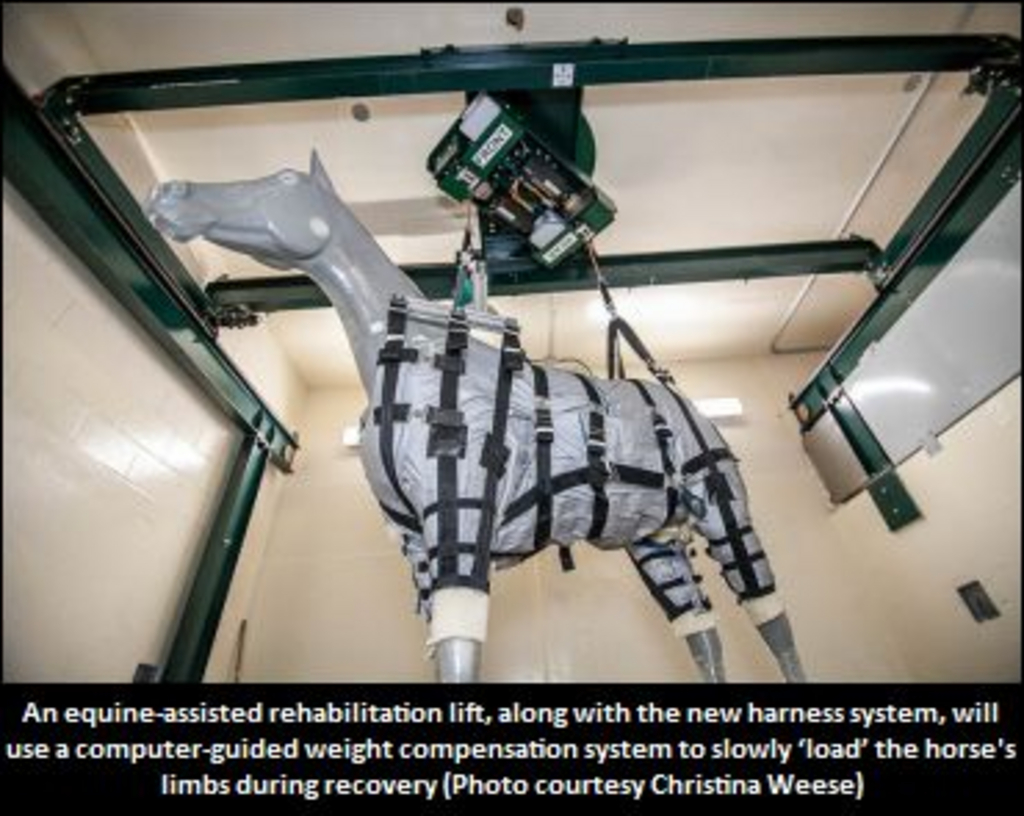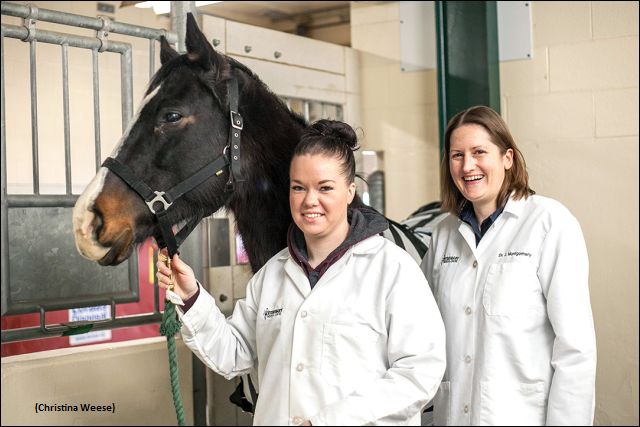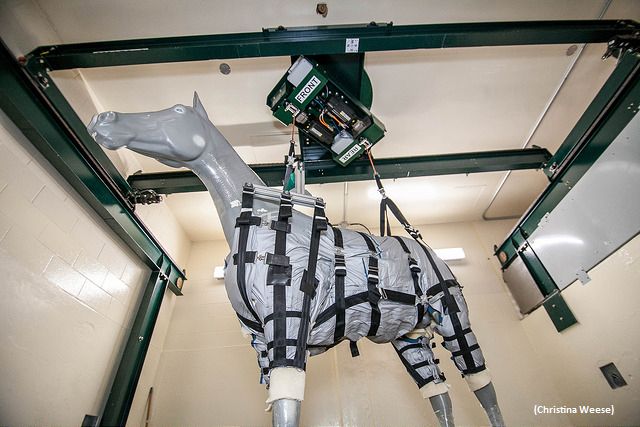
University of Saskatchewan (USask) researchers are working with RMD Engineering Inc. of Saskatoon to create a unique harness designed to help in the recovery and rehabilitation of horses from limb injuries. Such injuries are often fatal because currently available equipment is inadequate for proper treatment.
“If this works, the potential impact will be huge because there are no long-term rehabilitation harnesses available on the market today,” said Dr. Julia Montgomery at USask’s Western College of Veterinary Medicine, who leads the research.
The horse industry contributes more than $19 billion annually to the Canadian economy, according to a 2010 study by Equestrian Canada, and is responsible for more than 80,000 full-time jobs on farms and in horse racing and competitions.
Biomedical engineering master’s student Samantha Steinke joined the research project in 2016 as an undergraduate student after her horse had to be euthanized following a tendon injury that would have left him debilitated. She is working with RMD to build and test the new harness.
Last year, Steinke was awarded an 18-month master’s fellowship by Mitacs, which is sharing the cost of her $45,000 fellowship equally with RMD. Mitacs is a publicly funded not-for-profit research and training organization that supports collaborations between industry, academia and governments in Canada.

USask graduate student Samantha Steinke (left) holds ‘Mama’ alongside her supervisor, WCVM researcher Dr. Julia Montgomery. Steinke's graduate research is financially supported by Mitacs and RMD Engineering Inc.
“I’m very fortunate Mitacs is supporting me because otherwise I wouldn’t be able to continue on this project, which is a huge passion for me,” she said. “It’s great to work on this harness and make improvements with hopes of creating a useable long-term rehabilitation harness.”
Challenges facing researchers include the unique biomechanics of a horse, which carries 60 per cent of its weight on its front legs. When the animal injures a limb, it redistributes its considerable weight—from 400 kilograms to more than 550 kilograms—to its uninjured legs, often leading to a highly painful foot injury called ‘supporting limb laminitis’ which has a poor prognosis.
Euthanasia is often necessary because laminitis causes the horse to shift weight back to the originally injured leg, preventing healing and worsening the animal’s condition.
“Support slings and rescue slings aren’t suitable because they pick up the horse under the chest and abdomen, where they should not be picked up because it affects their breathing and other physiological functions,” said Steinke.
Long-term use of rescue slings for rehabilitation also can create pressure sores in horses, much like bed sores that bed-ridden human patients develop despite receiving excellent care, Montgomery said. Pressure from slings can also damage horses’ internal organs and nerves.
Montgomery has worked for the past four years with RMD on testing and fine-tuning the company’s Equine Assisted Rehabilitation Lift, designed to suit the biomechanics of a horse. The harness will complement the functions of the lift, which uses a computer-guided weight compensation system to slowly load the limbs of a horse during the rehabilitation, and support them if they stumble.
“We want to provide controlled mobility, not suspension from an overhead crane,” Montgomery said. “The system will help remove some of the weight so that horses can walk around and avoid load-associated complications. It’s intended to reduce immediate complications from immobility, such as wasting muscles. With the lift, we can rock horses from side to side to maintain blood flow.”

An equine-assisted rehabilitation lift, along with the new harness system, will use a computer-guided weight compensation system to slowly ‘load’ the horse's limbs during recovery.
Steinke said her work with RMD is focused on the load-bearing structures on a horse, and on building the harness so as to distribute the weight over solid bone structures, not muscle or organs.
With quick release buckles, the harness will be easy for one or two people to put on or remove—an important consideration for rural veterinary practices, which often have only a single person working.
For Steinke’s master’s project, the team is focusing on testing a breastplate designed and built by RMD that will help redistribute weight on the front of the horse. The device will have electronic sensors that detect pressure, heat and moisture levels, and proprietary means for adjusting its load to relieve pressure.
RMD aims to have the breastplate ready for testing on a Thoroughbred horse at the veterinary college by May, with testing continuing through the summer to modify the design as needed.
Montgomery said progress is necessarily slow because each step forward depends on the preceding step, and planning several steps ahead isn’t feasible. The hind legs section of the harness will take longer because the design has to enable the horses to urinate and defecate.
“I love horses and want to make contribution to equine health. I want to help solve a problem that doesn’t yet have a solution,” said Montgomery.
(University of Saskatchewan / USask Research Profile and Impact)

